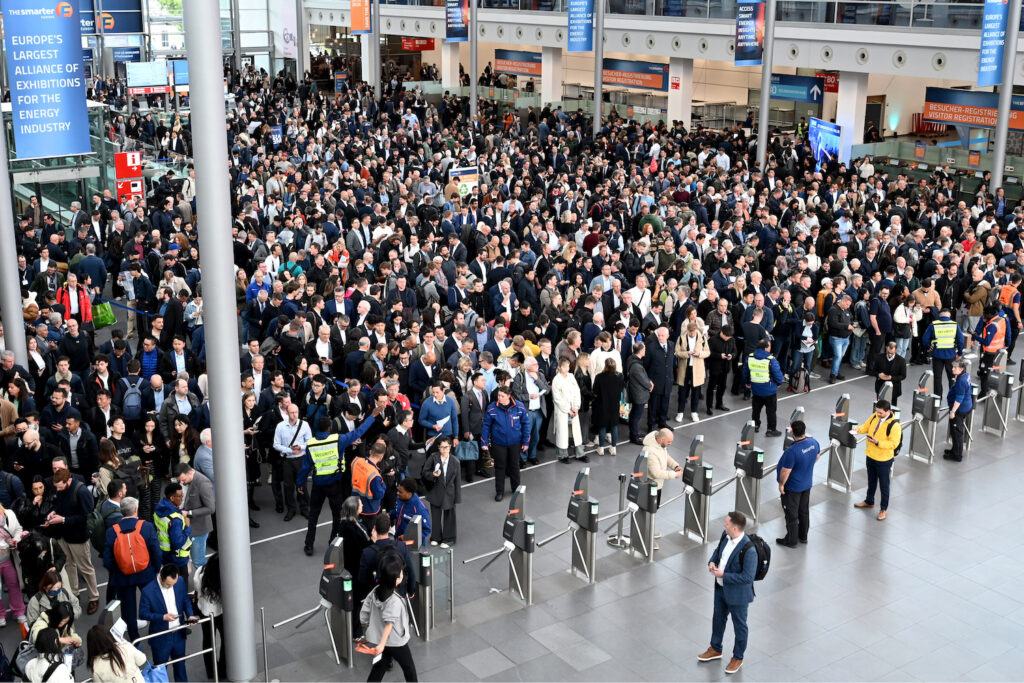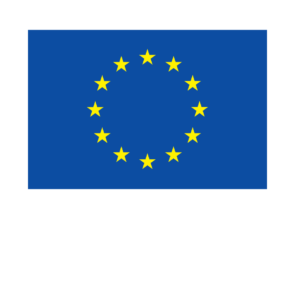May 2025 was an active and engaging month for the PEPPERONI project, marked by a strong presence at several high-impact events across Europe. From scientific conferences to community outreach, PEPPERONI partners showcased their progress and shared insights at the 19th Society and Materials (SAM) International Conference, tandemPV Workshop, Intersolar Europe and the FuturePV Workshop. Complementing these professional engagements, the project also reached younger audiences through Open Science events at schools in Lithuania, further broadening its impact and visibility.
Intersolar Europe – The World’s Leading Exhibition for the Solar Industry
Intersolar Europe 2025, held as part of The Smarter E Europe in Munich from May 7-9, 2025, with 2,700 exhibitors from 57 countries, attracted over 107,000 visitors and more than 2,600 conference attendees. The event provided a networking opportunity for the key players – from manufacturers, suppliers and distributors to installers, service providers, project developers, planners and start-ups – all under the motto “Connecting Solar Business”. Although tandem technologies were less dominant on the exhibition floor compared to the 2024 edition, scaling up perovskite-based tandem PVs, linear evaporation and transparent conductive oxide deposition were topics still broadly discussed. Project partners from Mondragon Assembly, Teknisolar and VON ARDENNE actively promoted PEPPERONI at individual booths with communication materials. Visitors were mostly interested in learning more about the benefits of vacuum deposition for the perovskite tandem absorber. To say shortly, vacuum deposition enables precise and uniform layering in perovskite tandem solar cells, ensuring optimal thickness, morphology, and high-quality interfaces that can enhance device performance and stability. It also allows for more reproducible and robust fabrication processes while its compatibility with a broader range of materials and scalability to large-area manufacturing make it a leading approach as tandem technologies move toward commercial applications.
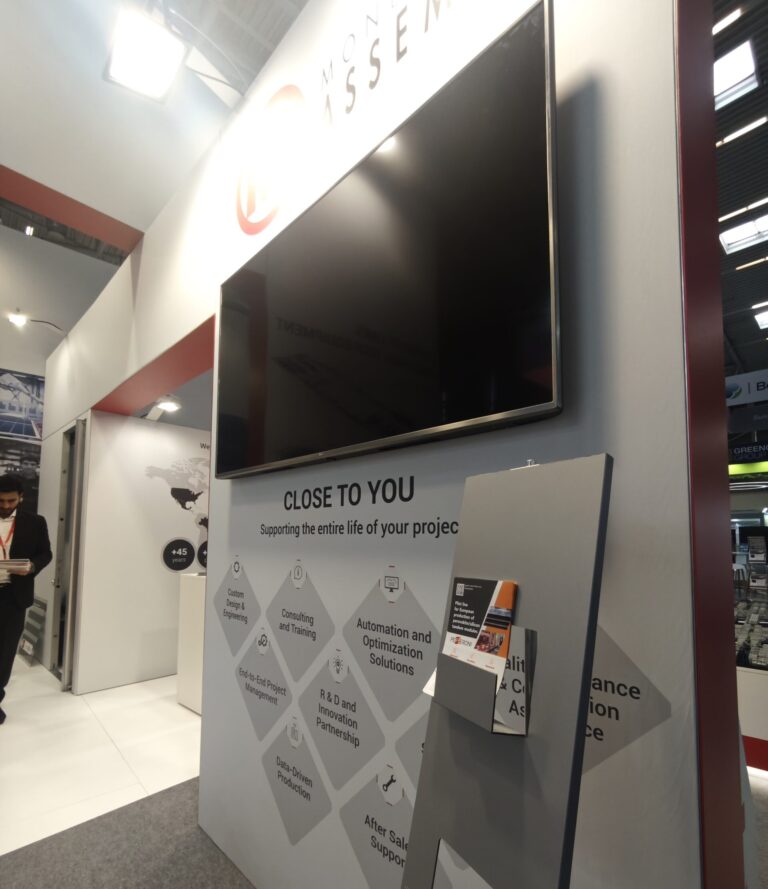
The 19th Society and Materials (SAM) International Conference
The SAM Conference is a global forum that promotes interdisciplinary dialogue on the relationship between materials and society. It attracts researchers and practitioners from various fields to discuss innovative methodologies and emerging challenges. This year, it took place from 6-7 May at the University of Alcalá in Alcalá de Henares, Madrid, Spain. Roberto Magnifico from the University of Liège attended and presented a case study on the perovskite/silicon tandem from the PEPPERONI project, titled “Towards eco-design of scalable perovskite/silicon tandem PV modules considering environmental and criticality dimensions”.


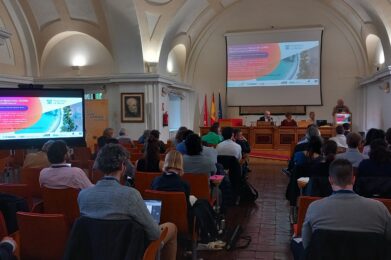
The 5th edition of the tandemPV Workshop
Every year, the tandemPV Workshop serves as a unique platform for connecting leading experts and researchers from the silicon and thin-film PV communities – fostering collaboration and innovation. Hosted by imec, this year’s edition took place from 13-15 May in Hasselt, Belgium, and attracted 240 participants from 27 countries, both online and on-site. PEPPERONI contributed to a significant portion of the workshop with four different project partners covering three talks and two poster sessions.
Technology development coordinator Fabian Fertig from QCELLS and Mark Khenkin from the Helmholtz-Zentrum Berlin (HZB) were invited to present and share their latest research on tandem PV technologies. While Fabian shared updates with the talk titled “Qcells tandem technology” under a panel dedicated to upscaling and industrialisation, Mark focused on outdoor degradation with an insightful talk about “Degradation Mechanisms in Perovskite Solar Cells Observed in Outdoor Conditions”. Quentin Jeangros from CSEM presented about “An experimental comparison between 2-, 3- and 4-terminal perovskite/silicon tandem architectures” – the third presentation acknowledging PEPPERONI research. All speakers answered questions from the audience regarding tandem solar cells, with most attendees inquiring about key stability and reliability challenges for perovskite and tandem cells. Another big topic was also the application of artificial intelligence (AI) in accelerating the development of tandem PV technologies.
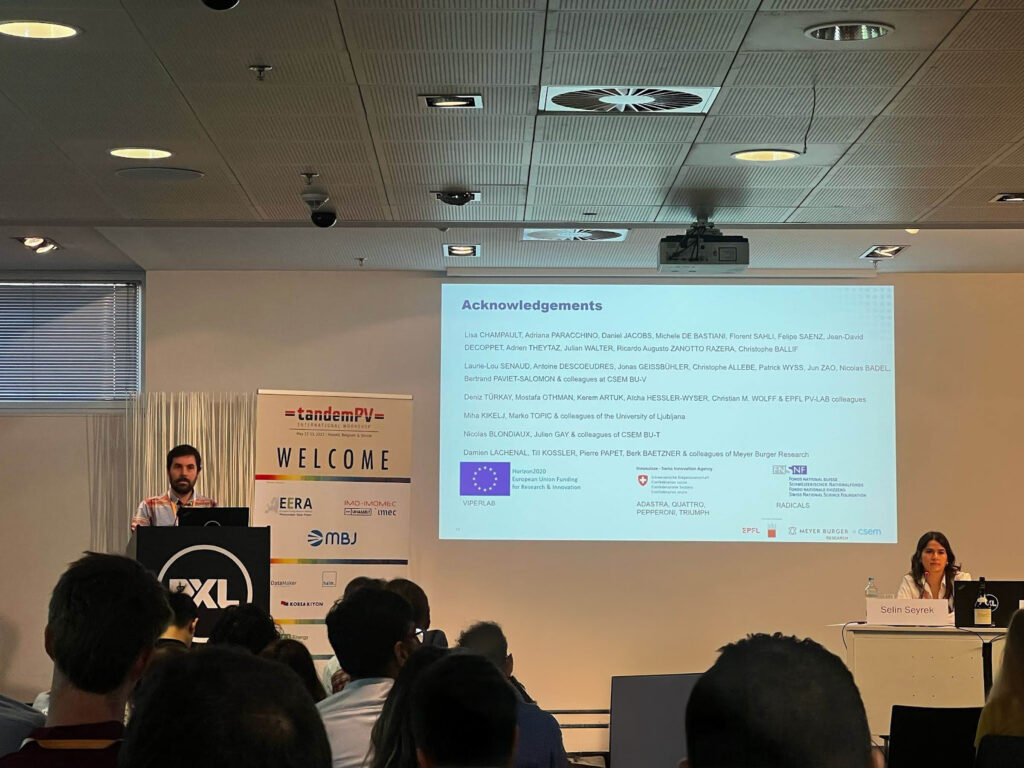
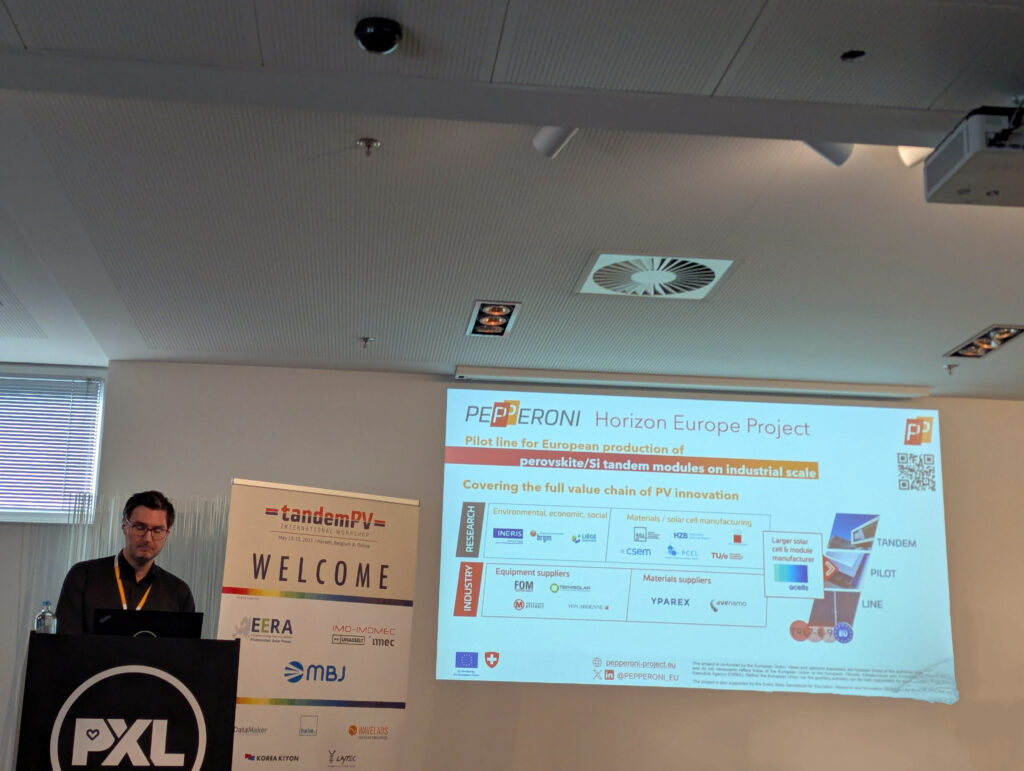
The posters presented by Petra Christöfl from the Polymer Competence Center Leoben (PCCL) and by Freya Leyland from HZB also provided an opportunity for meaningful exchanges about the impact of the PEPPERONI project. Both posters were well-received and offered intensive discussions addressing “Encapsulant Selection and Performance for High-Efficiency c-Si/Perovskite Tandem Modules” (presented by Petra Christöfl) as well as how “Encapsulant material choice affects the stability of laminated perovskite single-junction solar cells” (presented by Freya Leyland). Visitors to the posters wanted to know about the importance and challenges of encapsulating perovskite/silicon tandem PV, demonstrating their interest in innovative solutions.
FuturePV Workshop – Future-Proofing Perovskite PV: Innovations in Upscaling, Reliability and Circularity
With the FuturePV Workshop, the consortium of the TESTARE project aspired to gather the perovskite scientific community and industry for discussions on the latest developments in the field and for impactful networking. This event took place from 20-22 May at the University of Cyprus in Nicosia, Cyprus. Mark Khenkin from HZB contributed with a talk on “Why We Need Better Practices to Work with Perovskite Devices Outdoors”.
Open Science events at schools in Lithuania
“Young students are very curious about solar cells, which creates exciting opportunities for us to present the PEPPERONI project in an accessible and engaging way,” said Dr. Kristina Kantminienė from Kaunas University of Technology (KTU). To inspire the next generation of scientists, members of Prof. Vytautas Getautis’ research group “Synthesis of Organic Semiconductors” at KTU regularly visit local schools to host interactive workshops on the science of solar energy. These sessions explore recent advancements in PV technology, including innovations developed within the PEPPERONI project.
On May 7, 2025, Dr. Aistė Jagorovė, together with Aida Drevilkauskaitė and Povilas Luižys, gave a lecture titled “Solar cells: from theory to practice” to 20 gymnasium pupils from the Vilnius Christian gymnasium (Vilniaus krikščionių gimnazija). A second session was held on May 20, 2025, for 40 pupils at the Jeronimas Ralys gymnasium (Jeronimo Ralio gimnazija) in Jonava, this time led by Dr. Aistė Jagorovė, Dr. Ernestas Kasparavičius and Aida Drevilkauskaitė. During both visits, the team combined theory with hands-on experience by guiding students through practical experiments and helping them build their own small solar cells, bringing the science of PVs to life.
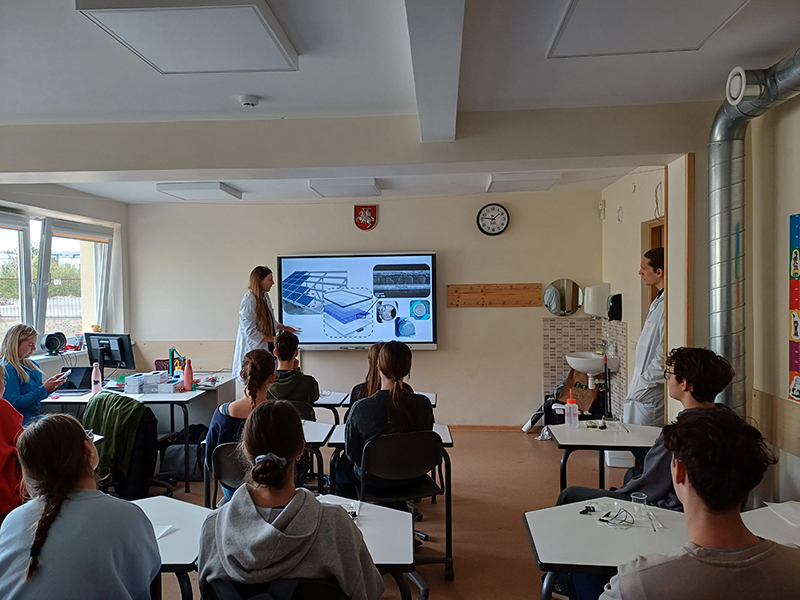
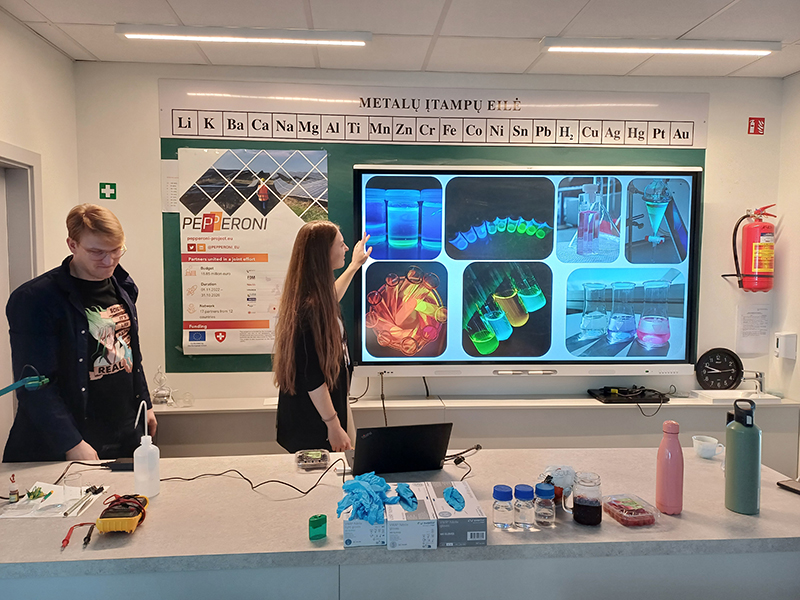
May was a bright month for the PEPPERONI project, with many partners actively communicating their progress, achievements and results to a wide audience using diverse platforms. As the project continues its vision for sustainability and innovation, we invite you to stay up to date on the latest news by subscribing to the upcoming PEPPERONI newsletter.

